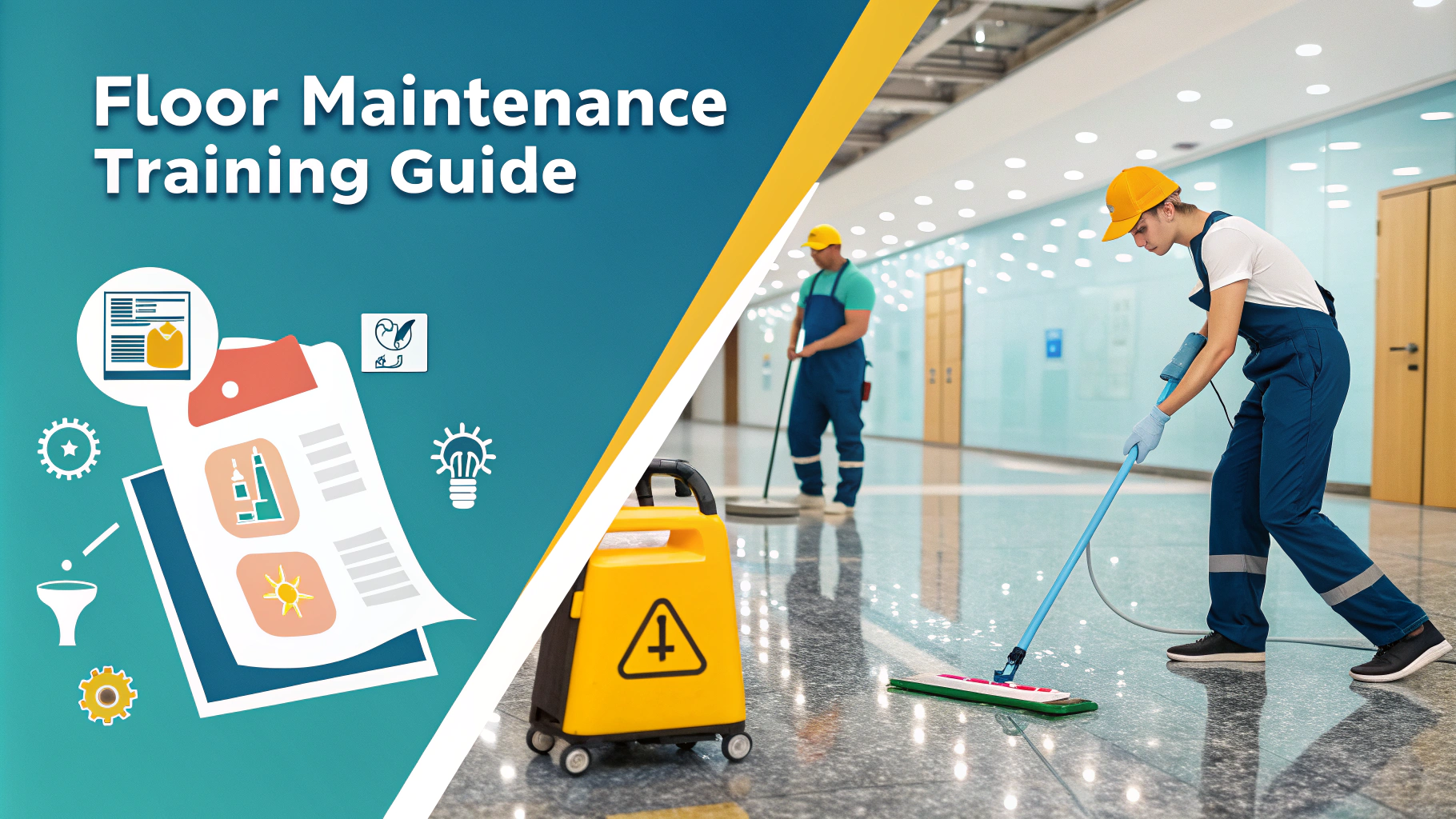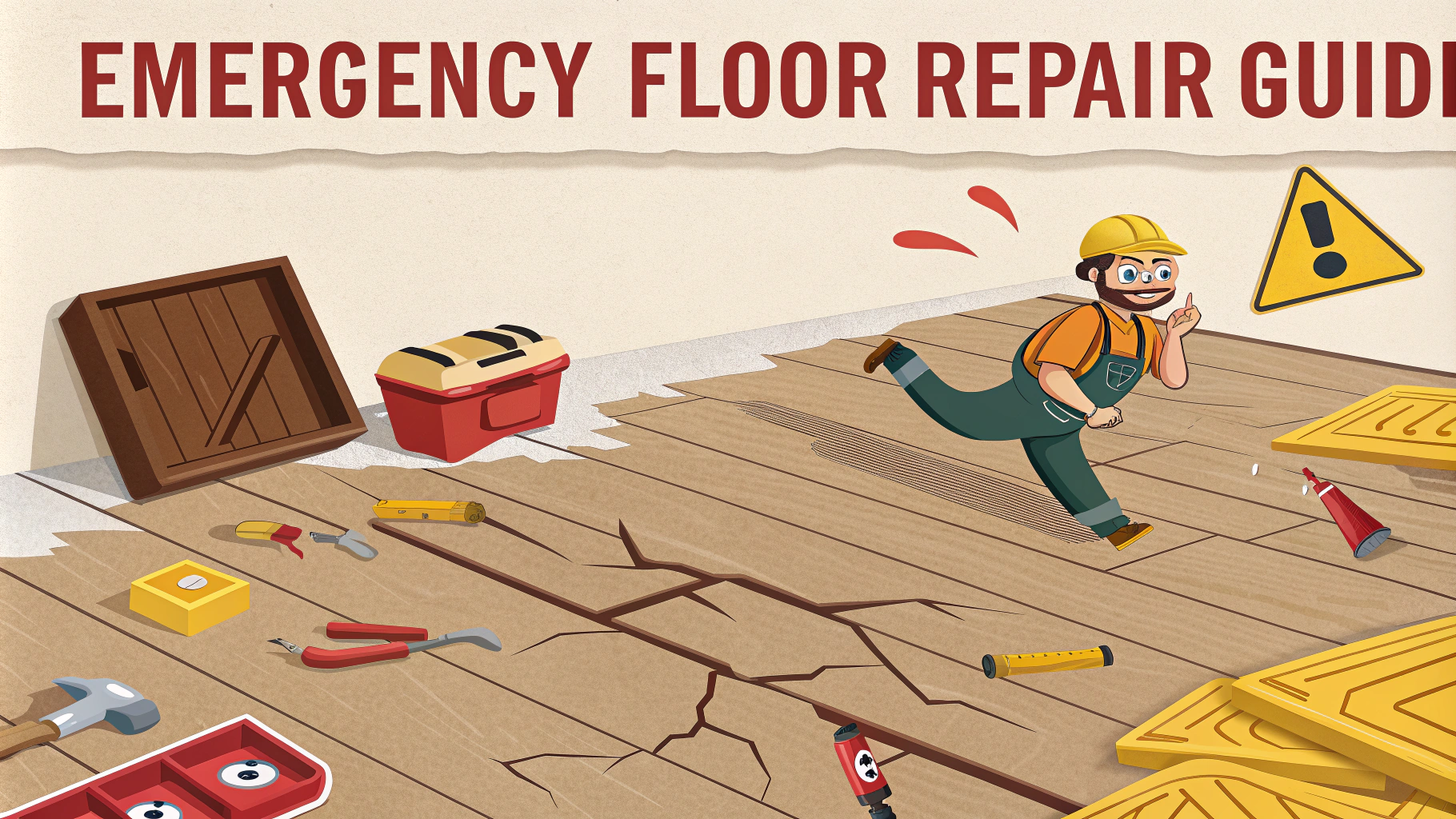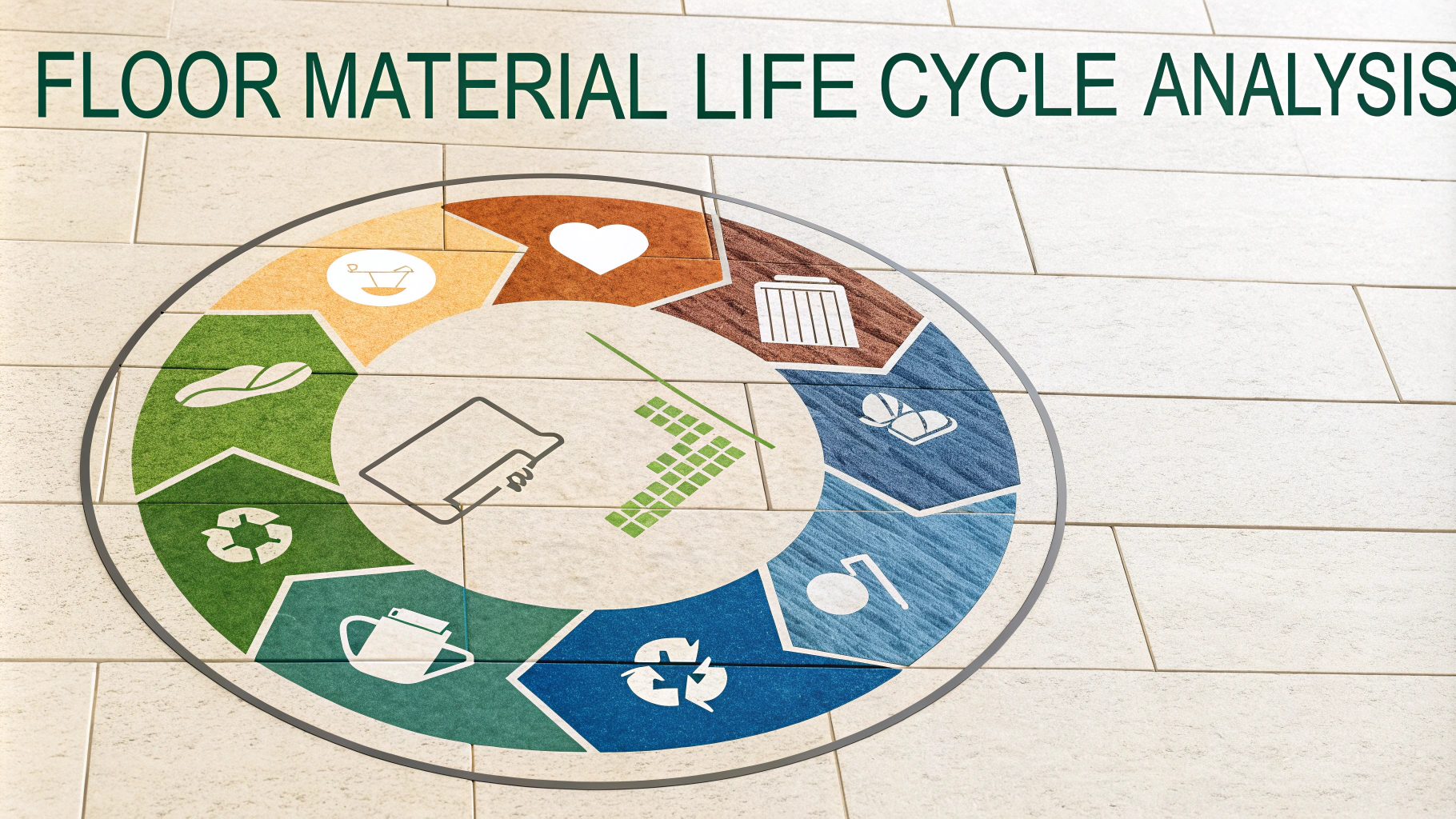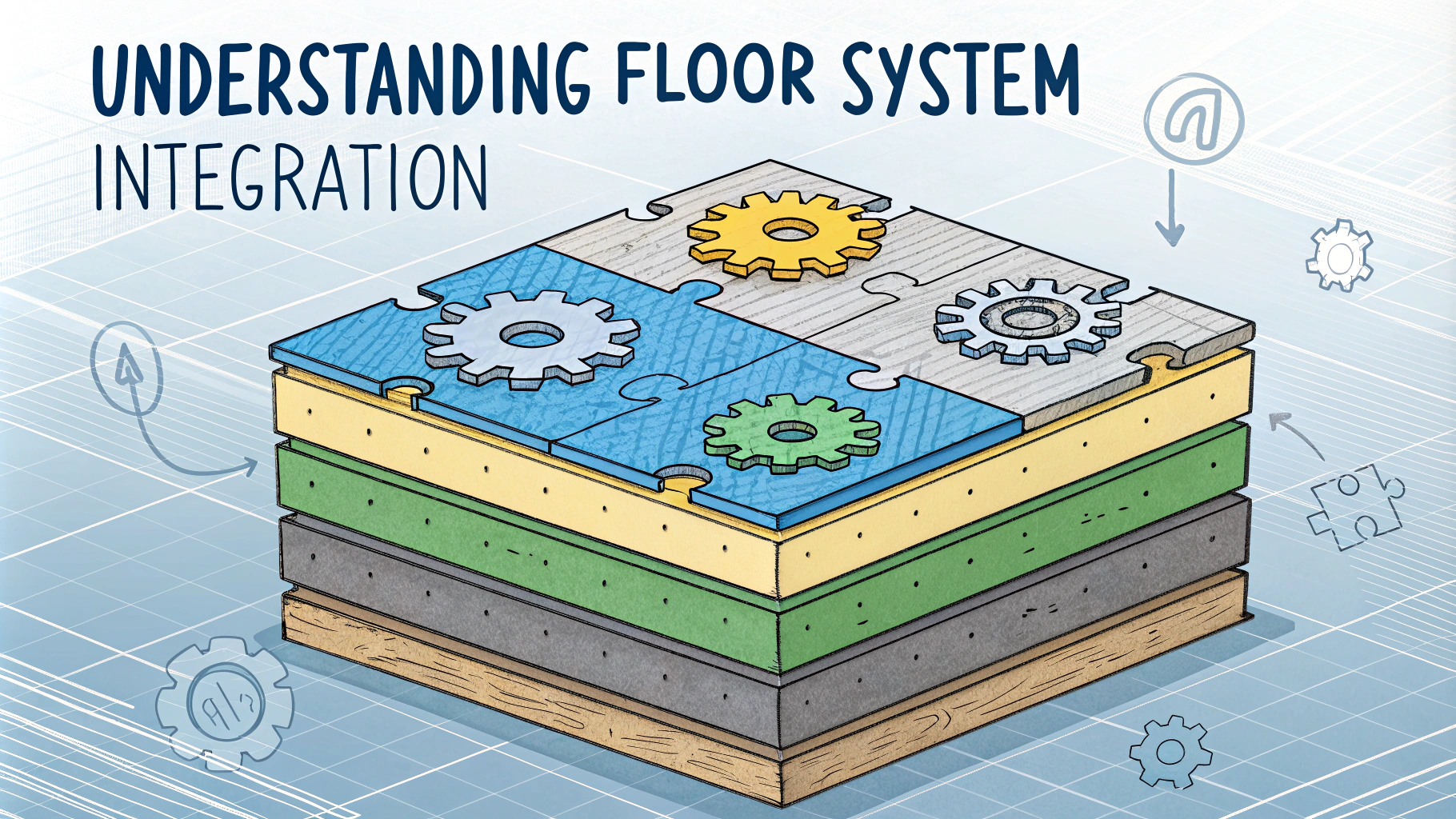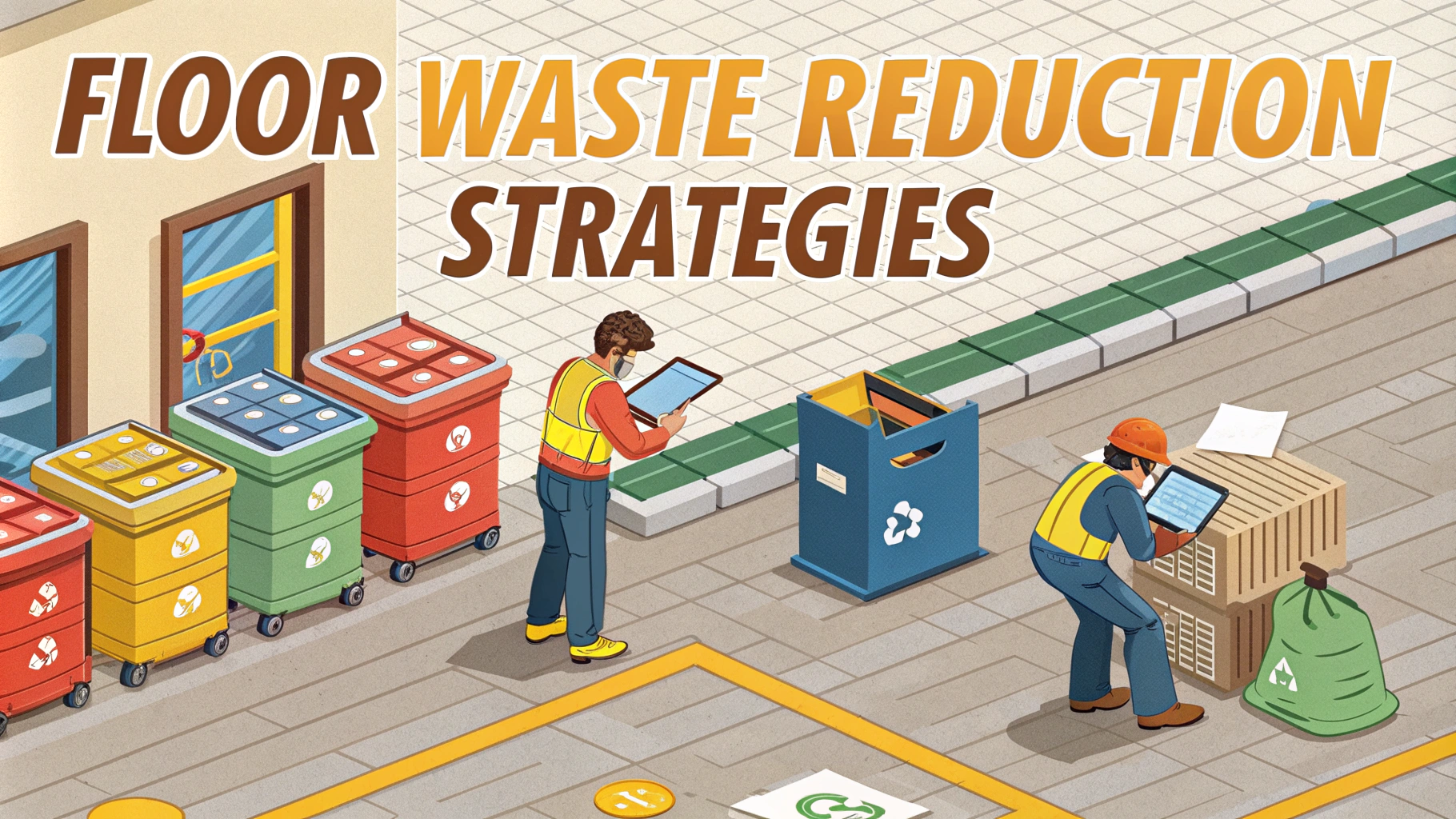Floor maintenance keeps your floors looking great while extending their lifespan and protecting your investment.
Regular care prevents costly repairs and maintains the safety of your space by reducing slip hazards and wear patterns.
This guide covers practical maintenance techniques for different flooring types, from daily cleaning to addressing common problems.
Essential Floor Care by Material
Hardwood Floors
- Sweep or vacuum daily to remove dirt and debris
- Use a damp (not wet) mop with wood-specific cleaner weekly
- Avoid excess water which can cause warping
- Place felt pads under furniture legs
- Refinish every 3-5 years depending on wear
Tile & Grout
- Sweep regularly and mop with pH-neutral cleaner
- Clean grout lines with a soft brush and specialized cleaner
- Seal grout annually to prevent staining
- Address chips and cracks promptly
Carpet Care
- Vacuum 2-3 times weekly for high-traffic areas
- Treat stains immediately with appropriate cleaners
- Professional deep cleaning every 12-18 months
- Use entrance mats to reduce dirt tracked inside
Problem Prevention Tips
| Issue | Prevention Method |
|---|---|
| Scratches | Use protective pads, lift (don’t drag) furniture |
| Water Damage | Clean spills immediately, use dehumidifiers in damp areas |
| Wear Patterns | Rotate furniture, use area rugs in high-traffic zones |
Cleaning Schedule
Daily Tasks:
- Sweep or vacuum main traffic areas
- Wipe up spills immediately
- Check for any new damage
Weekly Tasks:
- Full floor mopping with appropriate cleaners
- Deep vacuum all carpeted areas
- Clean entryway mats
Monthly Tasks:
- Inspect for wear and damage
- Deep clean high-traffic areas
- Check and clean baseboards
Professional Maintenance
Contact a certified flooring specialist for these services:
- Annual deep cleaning
- Refinishing wood floors
- Repair of damaged sections
- Grout cleaning and sealing
Recommended Tools and Products
- Microfiber mops and cloths
- pH-neutral floor cleaners
- Quality vacuum with appropriate attachments
- Material-specific spot cleaners
- Protective felt pads
Next Steps for Better Floor Care
Start with a thorough cleaning of your current floors to establish a baseline for your maintenance routine.
Create a cleaning schedule that works for your space and stick to it.
Keep a supply of appropriate cleaning products and tools readily available.
For professional floor maintenance services, contact the National Wood Flooring Association (NWFA) at 800-422-4556 or visit www.nwfa.org to find certified professionals in your area.
Floor Care During Seasonal Changes
Summer Care
- Monitor humidity levels to prevent wood expansion
- Clean sand and outdoor debris more frequently
- Use UV protection for floors near windows
- Maintain consistent indoor temperature
Winter Protection
- Place water-absorbent mats at entrances
- Clean salt residue immediately
- Use humidifiers to prevent wood shrinkage
- Keep floors dry to prevent slip hazards
Special Considerations for Commercial Spaces
- Implement more frequent cleaning schedules
- Use industrial-grade cleaning products
- Install heavy-duty entrance matting systems
- Schedule maintenance during off-peak hours
- Document cleaning procedures for consistency
Emergency Floor Care Procedures
| Situation | Immediate Action |
|---|---|
| Flooding | Extract water, use dehumidifiers, contact professionals |
| Chemical Spills | Neutralize according to material safety guidelines |
| Deep Scratches | Clean area, apply appropriate filler, protect until cured |
Maintaining Your Investment for the Long Term
Document your maintenance routines and keep records of professional services performed. Regular assessment of your floor care program helps identify areas for improvement and ensures your flooring continues to perform well for years to come.
Remember that prevention is always more cost-effective than repair. Investing time in proper maintenance now will protect your flooring investment and maintain its beauty and functionality for the future.
Stay informed about new cleaning products and techniques specific to your flooring type, and always test new products in an inconspicuous area first.
FAQs
- How often should different types of flooring be cleaned?
Hardwood floors should be swept daily and mopped weekly, carpet needs vacuuming 2-3 times per week and deep cleaning every 6-12 months, vinyl requires daily sweeping and weekly mopping, and tile should be swept daily with weekly deep cleaning. - What’s the best way to remove scuff marks from vinyl flooring?
Use a tennis ball, melamine foam pad, or baking soda paste to gently rub the scuff mark. For stubborn marks, use mineral spirits on a clean cloth, followed by thorough rinsing. - How can I prevent scratches on hardwood floors?
Install felt pads under furniture legs, use protective mats at entrances, keep pet nails trimmed, avoid high heels, and place rugs in high-traffic areas. - What cleaning products should never be used on natural stone floors?
Avoid acidic cleaners, vinegar, lemon juice, ammonia, and bleach as they can etch and damage natural stone. Use only pH-neutral cleaners specifically designed for stone. - How do I properly maintain waxed floors?
Sweep or dust mop daily, clean spills immediately, avoid water-based cleaning, apply new coat of wax every 6-12 months, and buff regularly to maintain shine. - What’s the correct way to clean grout lines in tile flooring?
Use a mixture of baking soda and water to form a paste, apply to grout lines, scrub with a grout brush, let sit for 10 minutes, then rinse thoroughly. For deeper cleaning, use oxygen bleach solution. - How should I handle water damage on laminate flooring?
Remove standing water immediately, use dehumidifiers and fans for drying, check for warping or swelling, and replace damaged sections if necessary. Prevention includes immediate spill cleanup and avoiding excess water during cleaning. - What are the signs that a floor needs professional refinishing?
Deep scratches, extensive wear patterns, gray or dark discoloration, splintering, water damage, or significant color fading indicate need for professional refinishing. - How do I remove carpet stains without damaging the fibers?
Blot (don’t rub) the stain immediately, use appropriate cleaning solution for specific stain type, work from outside toward center, and always test cleaning solutions in inconspicuous area first. - What’s the proper maintenance schedule for commercial flooring?
Daily sweeping and spot cleaning, weekly thorough cleaning, monthly deep cleaning, and quarterly professional maintenance for high-traffic areas.

